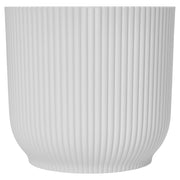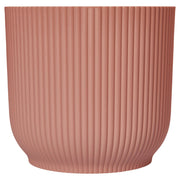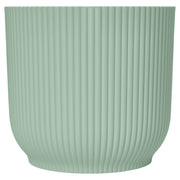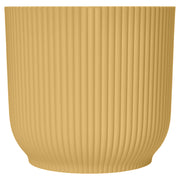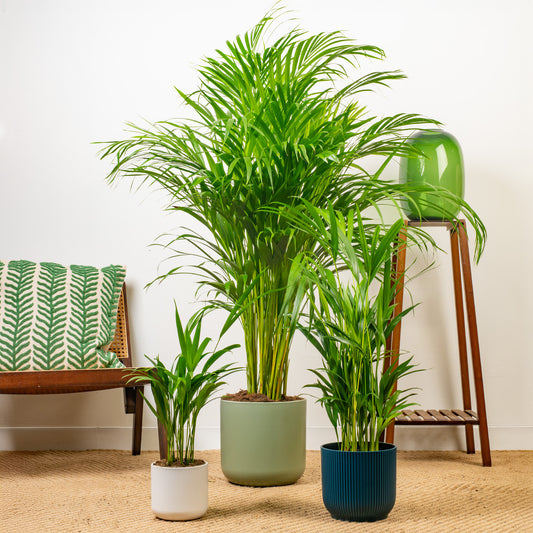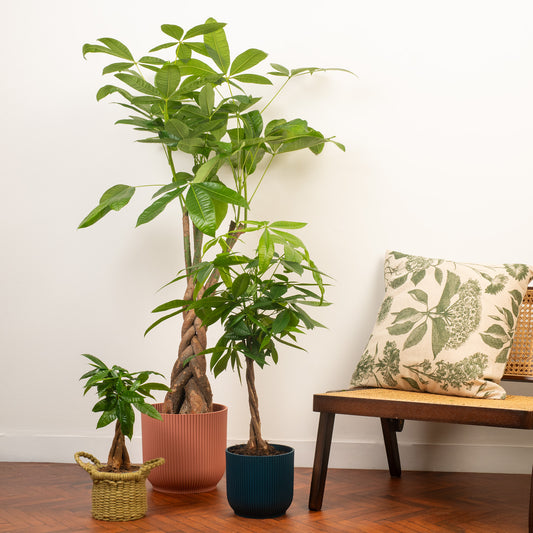Product description
Baby Monstera Deliciosa, or Baby Swiss Cheese Plant as it is more commonly known, is a small version of the iconic statement houseplant. Although the Swiss Cheese Plant is well-known for the distinctive holes in the leaves, there won’t be any of those for a few years on your baby plant. Instead, for the first 3 years your plant will have lush, green, heart-shaped leaves.
Place your Baby Monstera in bright, indirect sunlight, ideally in a humid environment. If you place it in a drier environment, a regular misting is required. Once the top layer of soil is dry to touch, it’s time to rewater. If you do overwater this variety, it will let you know when its leaves begin to brown. This plant is poisonous if ingested, so keep away from pets and children.
This houseplant is an excellent choice for any plant lover, and it would also make a perfect plant gift. The miniature size is perfect for adding some greenery to a small shelf or an office desk with its rich green leaves. As it grows to a bigger size, it would be perfect as a statement plant in a living room or in front of a large window.
It’s not unusual to give your plant a name… so don’t hesitate to choose one that you think suits the plant! Try naming your plant with the first name or word that you think of when you look at it - that’s how we ended up with an orchid named Clover and spider plant called Joseph.
House Plant Size Guide

House plants come in a wide array of shapes and sizes depending on the variety and maturity of the plant.
6cm/12cm/15cm/19cm/23cm nursery pots are the most common size of pot that they are sold in. This measurement is the diameter at the top of the pot.
12cm potted plants are the most popular providing great value for money and an instant impact. Larger plants that come in pots of 20cm+ are great for making a statement in any room and can represent years of growth to get to that level of maturity and size.
Plant specs, care guide & tips
Key features
Specifications
Instructions
Top Tip
Monstera thrives in warm, humid environments, making it an excellent choice for bathrooms or rooms with higher humidity levels. Dust the leaves regularly with a damp cloth to maintain their iconic glossy appearance and allow for better photosynthesis. Rotate the plant every few weeks to encourage even growth and prevent it from leaning. With proper care, Monstera will become a striking and elegant feature in your home.
How to Water
Water Monstera when the top 2–3 cm of soil feels dry to the touch. During the growing season, this is typically once a week, but always adjust based on the environment. Reduce watering in the winter months when growth slows. Ensure excess water drains away to prevent root rot, as Monsteras prefer slightly moist but not waterlogged soil. Use filtered or rainwater to avoid mineral build-up on the plant’s leaves.
How to Plant
To plant Monstera, choose a pot with drainage holes and fill it with a well-draining, nutrient-rich potting mix, such as one designed for houseplants. Carefully remove the plant from its container, loosen the roots slightly, and place it so the base of the stem sits just above the soil line. Backfill with soil, firm gently, and water thoroughly. Position the pot in a location with bright, indirect light to encourage growth while avoiding direct sunlight, which can scorch its leaves.





